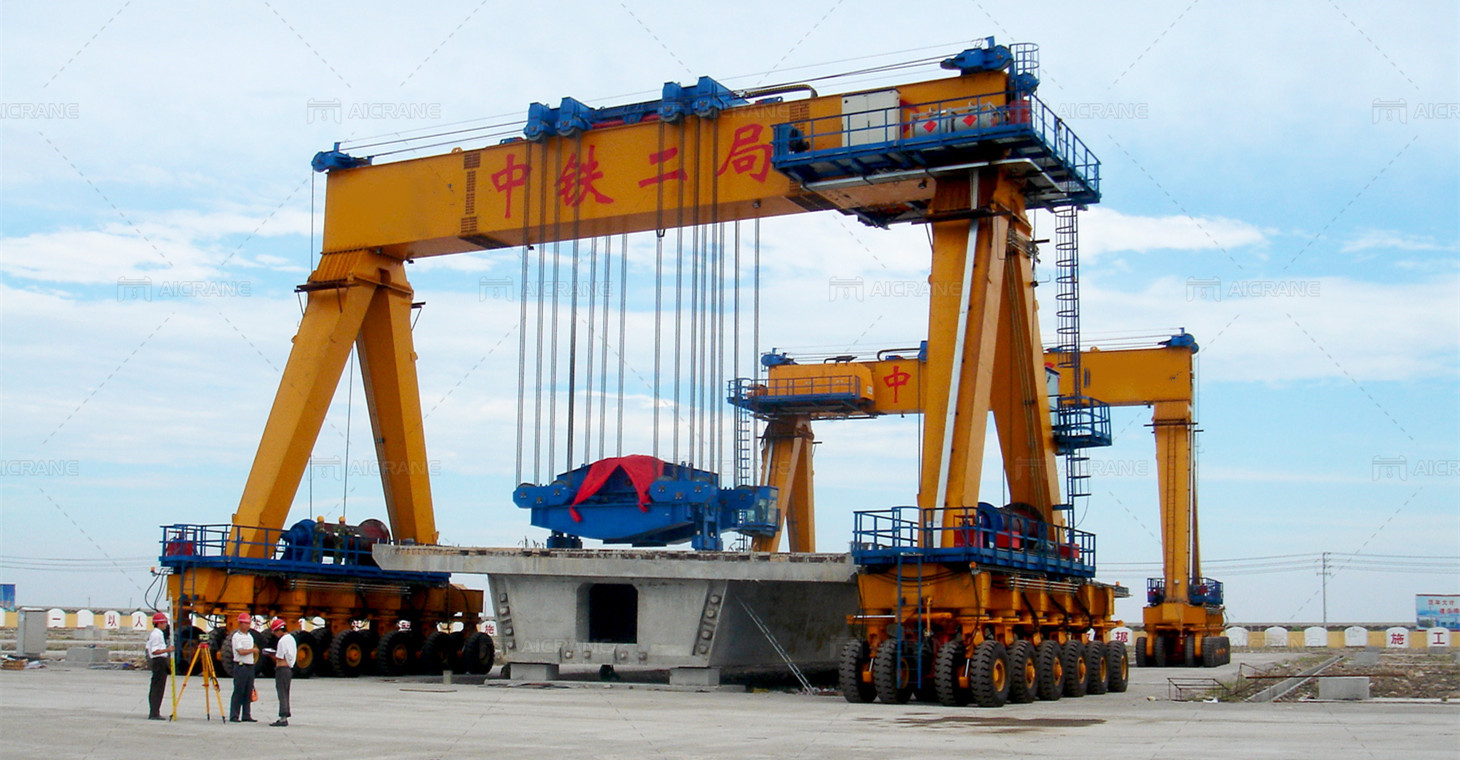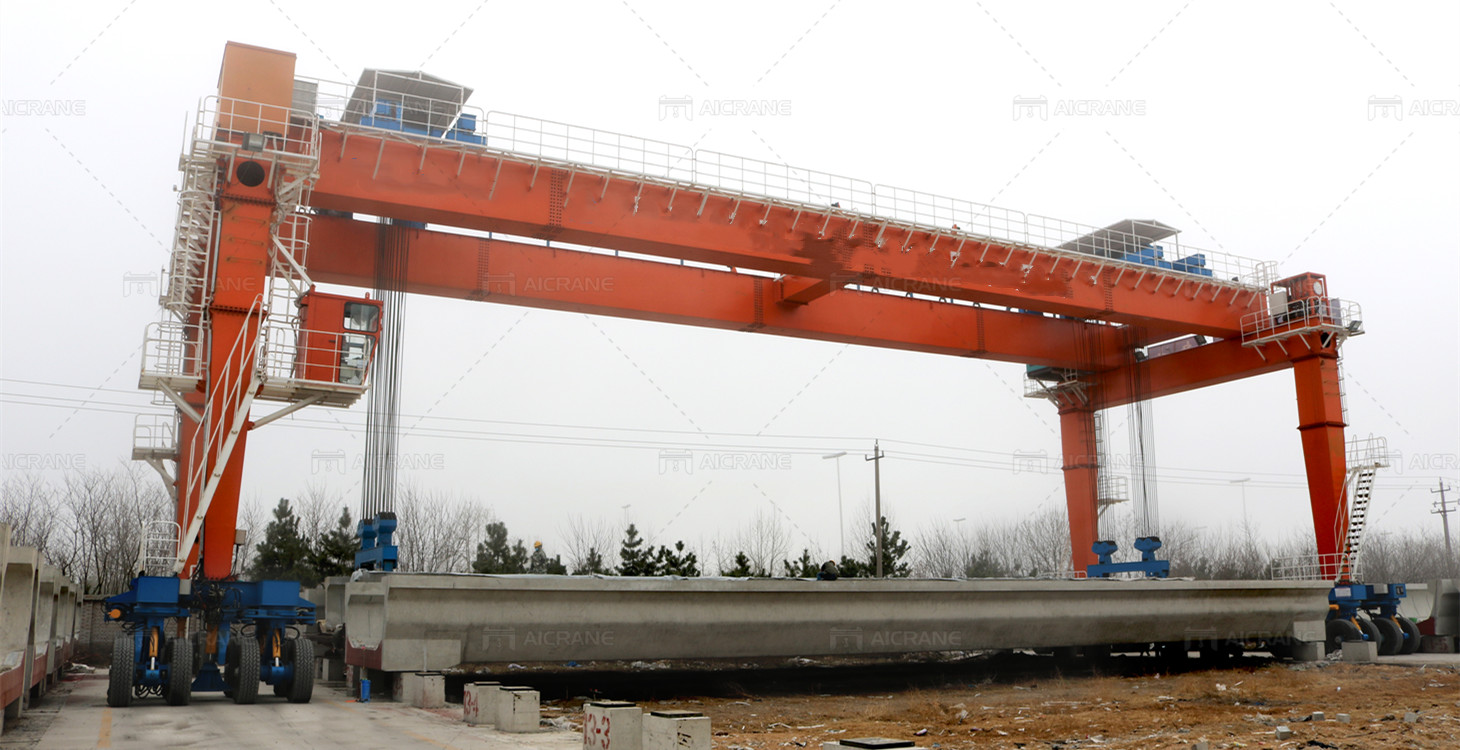Straddle carriers are essential pieces of equipment used in various industries, particularly in ports, container terminals, and logistics hubs. These machines are designed to lift and transport containers, pallets, and other heavy loads efficiently. Installing and maintaining a straddle carrier outdoors requires meticulous planning, adherence to safety protocols, and a comprehensive understanding of the equipment. This guide will walk you through the process of installing and maintaining a straddle carrier outdoors.

Installation of Straddle Carrier
Site Preparation
Before the straddle carrier arrives, the site must be prepared. This involves ensuring that the ground is level and stable to support the heavy weight of the carrier. The area should be free from obstacles, debris, and any other materials that could interfere with the installation. It’s also essential to have clear access routes for the delivery vehicles and gantry cranes that will be used during the installation process.
Receiving the Equipment
When the straddle carrier arrives at the site, it’s crucial to inspect the equipment for any signs of damage that may have occurred during transportation. Check all parts and components against the shipping list to ensure that everything is accounted for. Any discrepancies or damages should be reported immediately to the supplier.
Assembling the Straddle Carrier
The assembly process begins with positioning the main frame of the straddle carrier. This is typically done using cranes or other heavy lifting equipment. The main frame is the backbone of the carrier, so it must be positioned accurately. Once the main frame is in place, the next step is to attach the legs and wheels. It’s important to follow the manufacturer’s instructions carefully during this process to ensure that all components are correctly aligned and securely fastened.
Installing the Power System
Straddle carriers can be powered by diesel engines, electric motors, or a combination of both. Installing the power system involves mounting the engine or motor, connecting fuel lines or electrical cables, and ensuring that all components are properly grounded. It’s essential to follow all safety protocols during this process to prevent accidents and ensure the reliable operation of the carrier.
Hydraulic and Electrical Systems
The hydraulic and electrical systems are critical components of the straddle carrier. The hydraulic system controls the lifting and lowering of the load, while the electrical system powers the various sensors, controls, and lighting. Installing these systems involves connecting hoses, wiring, and other components according to the manufacturer’s specifications. It’s essential to test these systems thoroughly to ensure that they are functioning correctly.
Testing and Calibration
Once the straddle carrier is fully assembled, the next step is to conduct a series of tests to ensure that it is operating correctly. This includes testing the lifting and lowering mechanisms, steering, braking, and other functions. Calibration is also necessary to ensure that the carrier can accurately lift and transport loads. Any issues that are identified during testing should be addressed immediately.

Maintenance of Straddle Carrier
Regular Inspections
Regular inspections are crucial for maintaining the straddle carrier in optimal condition. These inspections should be conducted daily, weekly, and monthly, depending on the usage and environmental conditions. Daily inspections typically involve checking the tires, hydraulic systems, and electrical components for any signs of wear or damage. Weekly inspections may involve more detailed checks of the engine or motor, fuel or electrical systems, and structural components. Monthly inspections should include a comprehensive assessment of all systems and components.
Lubrication
Proper lubrication is essential for the smooth operation of the straddle carrier. This involves regularly checking and replenishing the lubricants in the engine, hydraulic systems, and other moving parts. Using the correct type of lubricant is crucial to prevent wear and tear and ensure the longevity of the carrier.
Hydraulic System Maintenance
The hydraulic system is one of the most critical components of the straddle carrier. Regular maintenance involves checking the hydraulic fluid levels, inspecting hoses and connections for leaks or damage, and ensuring that the hydraulic cylinders are functioning correctly. It’s also essential to replace the hydraulic fluid periodically according to the manufacturer’s recommendations.
Electrical System Maintenance
The electrical system powers the various sensors, controls, and lighting on the straddle carrier. Regular maintenance involves checking the wiring for any signs of wear or damage, inspecting the sensors and controls for proper operation, and ensuring that the battery is in good condition. It’s also essential to keep the electrical components clean and free from dust and debris.
Tire Maintenance
The tires are critical for the mobility of the straddle carrier. Regular maintenance involves checking the tire pressure, inspecting the tires for any signs of wear or damage, and ensuring that the wheels are properly aligned. It’s also important to replace the tires periodically to ensure safe and efficient operation.
Engine or Motor Maintenance
Whether the straddle carrier is powered by a diesel engine or an electric motor, regular maintenance is essential to ensure reliable operation. This involves checking the fuel or electrical systems, inspecting the engine or motor for any signs of wear or damage, and ensuring that the air filters are clean. It’s also important to follow the manufacturer’s recommendations for oil changes and other routine maintenance tasks.
Safety Checks
Safety is a top priority when operating and maintaining a straddle carrier mobile crane https://aicranemachine.com/gantry-crane/mobile/. Regular safety checks involve inspecting the brakes, steering, and other critical systems to ensure that they are functioning correctly. It’s also essential to check the safety devices, such as alarms and emergency stop buttons, to ensure that they are in good working order.
Installing and maintaining a straddle carrier outdoors requires careful planning, attention to detail, and a commitment to safety. By following the steps outlined in this guide, you can ensure that your straddle carrier is installed correctly and maintained in optimal condition. Regular inspections, proper lubrication, and adherence to the manufacturer’s recommendations are essential for the reliable and efficient operation of the straddle carrier. With the right care and maintenance, your straddle carrier can provide years of dependable service in even the most demanding outdoor environments.
